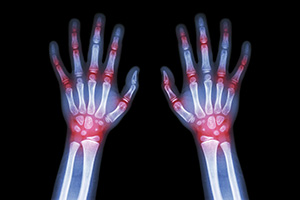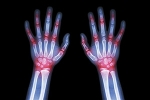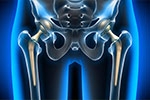
Arthritis is an inflammatory condition that affects the body's joints. The cushioning (cartilage) between articulating bones begins to degenerate, causing pain, stiffness and disability. According to the Centers for Disease Control and Prevention (CDC), around 52.5 million US adults are diagnosed with arthritis and 62% are over 65 years old. Although commonly associated with aging, arthritis can also occur in children.
Statistics show that about 294,000 children under the age 18 suffer from juvenile arthritis. In children, arthritis is an autoimmune disease- the body's immune system functions abnormally, attacking healthy cells of the body and causing inflammation. This inflammation can damage the joints, leading to heat, redness, pain and swelling in the hands, knees and feet. Usually, these symptoms are worse in the mornings. Children with juvenile arthritis have high fevers, rashes, eye inflammation, swollen lymph nodes and may limp. It can also affect the development of bones limbs and joints grow unevenly. Symptoms can vary from child to child, with some not showing any symptoms at all. This makes diagnosis difficult.
While diagnosing, doctors consider the character of symptoms and the duration of symptoms. For example, swelling should be present for at least 6 weeks before being considered a symptom of juvenile arthritis. Family history is considered because having a family member with juvenile arthritis or any other autoimmune diseases increases the probability of presenting. A thorough physical examination is also performed.
A battery of tests may be ordered because there is no single test to confirm juvenile arthritis. Various blood tests are ordered to rule out other conditions, identify antibody indicators and the presence of inflammation. X-rays are ordered to indicate soft tissue changes, abnormal bone development or injury.
Treatment
Treatment of juvenile arthritis is aimed at preserving high levels of physical activity so that the child can continue to have good social wellbeing and quality of life. In order to achieve this, treatment is focused on relieving pain and swelling, maintaining complete range of motion, preventing, detecting and treating complications. Treatment involves a multi-disciplinary approach provided by a team of specialists.
- Medication may be prescribed- nonsteroidal anti-inflammatory drugs (NSAIDs), disease-modifying antirheumatic drugs (DMARDs) and corticosteroids to relieve pain and inflammation.
- Physical therapy, involving a regular exercise program, is usually recommended to maintain muscle tone and improve range of motion.
- Splints may be applied to ensure that bones and joints grow normally.
- Occupational therapy can help teach ways to conserve energy, minimize pain and protect joints.
- Routine eye examinations are needed to monitor eye inflammation and identify any serious complications.
- Surgery may be required sometimes to correct deformities.
Treatment works best when the child and their family work as a team with therapists. Complete knowledge about juvenile arthritis can help the family cope with the disease and support their child. A support group can help many parents adapt to their new lifestyle. Children should be encouraged to attend school, participate in family activities and live a life that is as normal as possible.
Dr. Domb is a nationally recognized orthopaedic surgeon specializing in sports medicine and arthroscopic surgery of the hip, shoulder and knee. A noted pioneer in advanced new techniques in hip arthroscopy, he delivers innovative treatments for patients with hip injuries such as impingement and labral tears. Dr. Domb is also an expert in arthroscopic surgery of the shoulder and knee, adept in specialized techniques including arthroscopic rotator cuff repair and all-inside ACL reconstruction.





